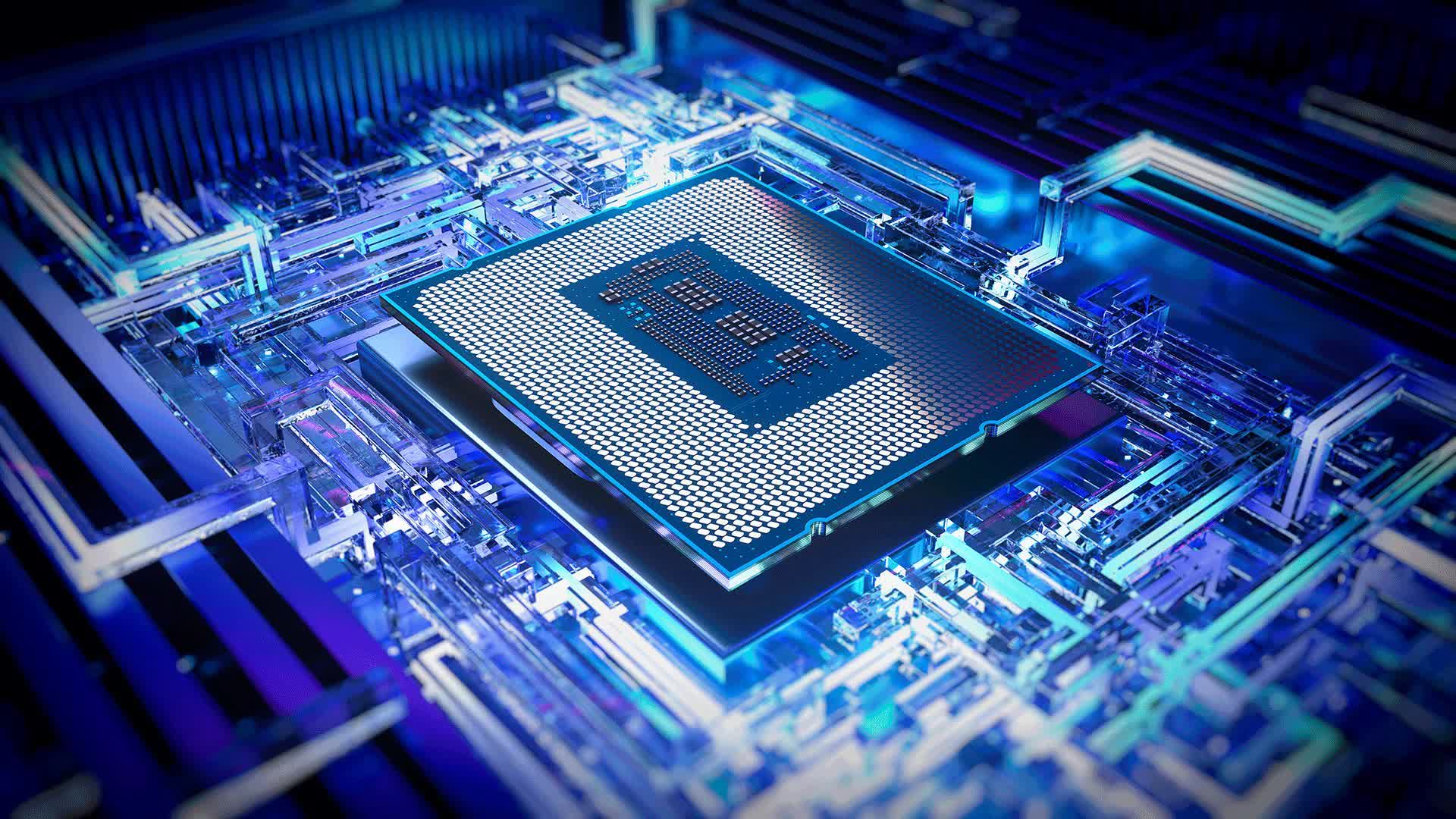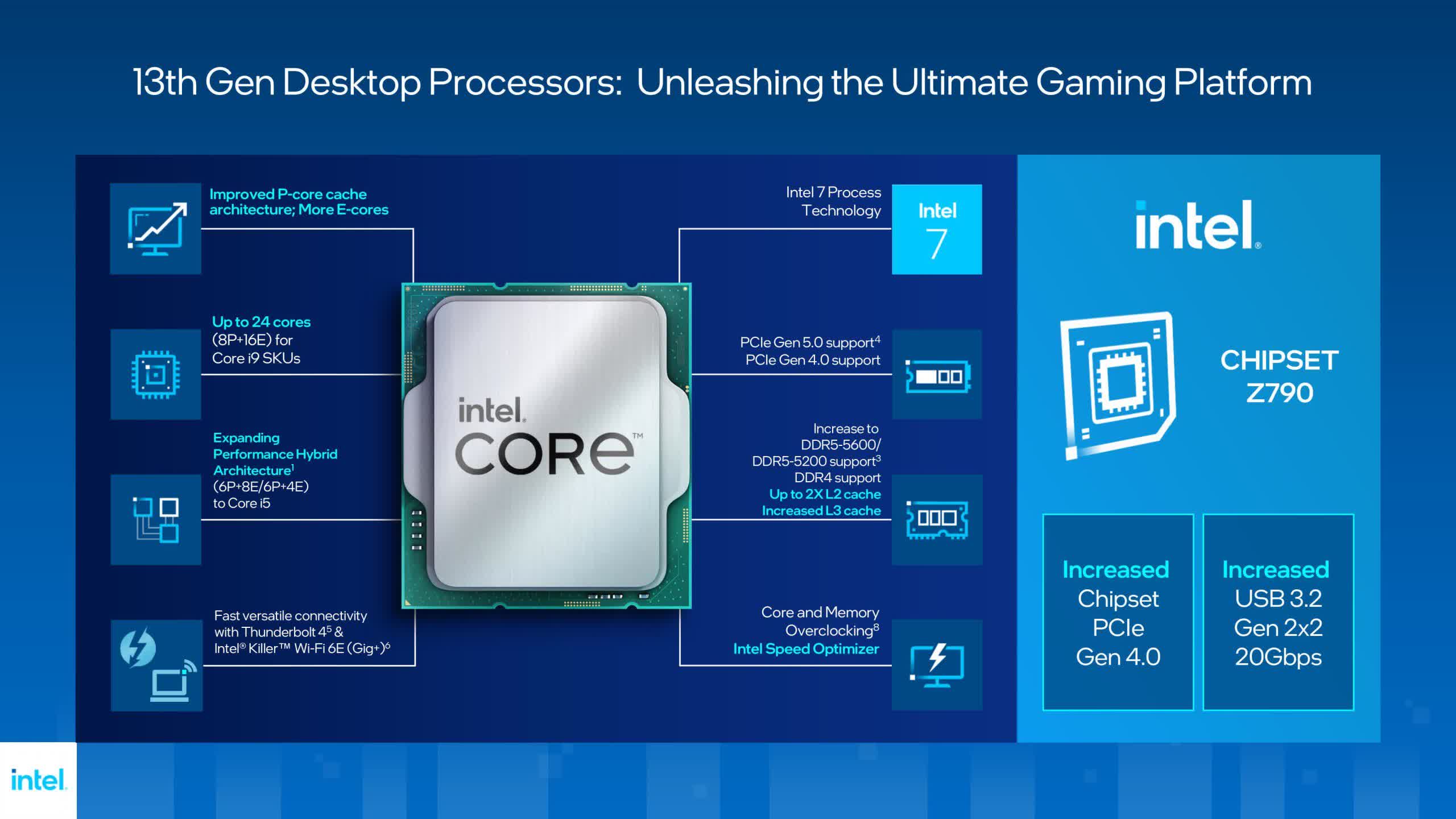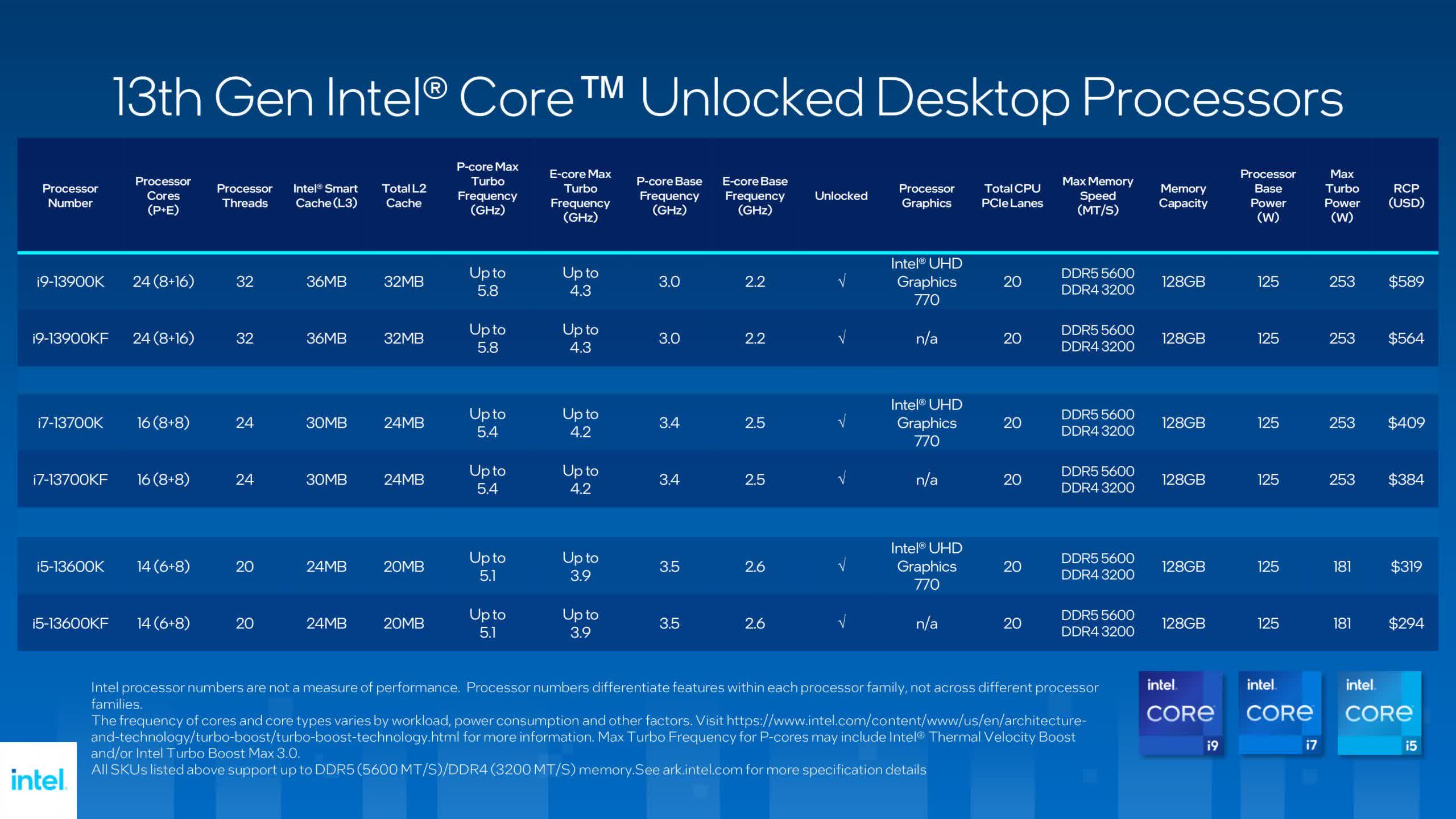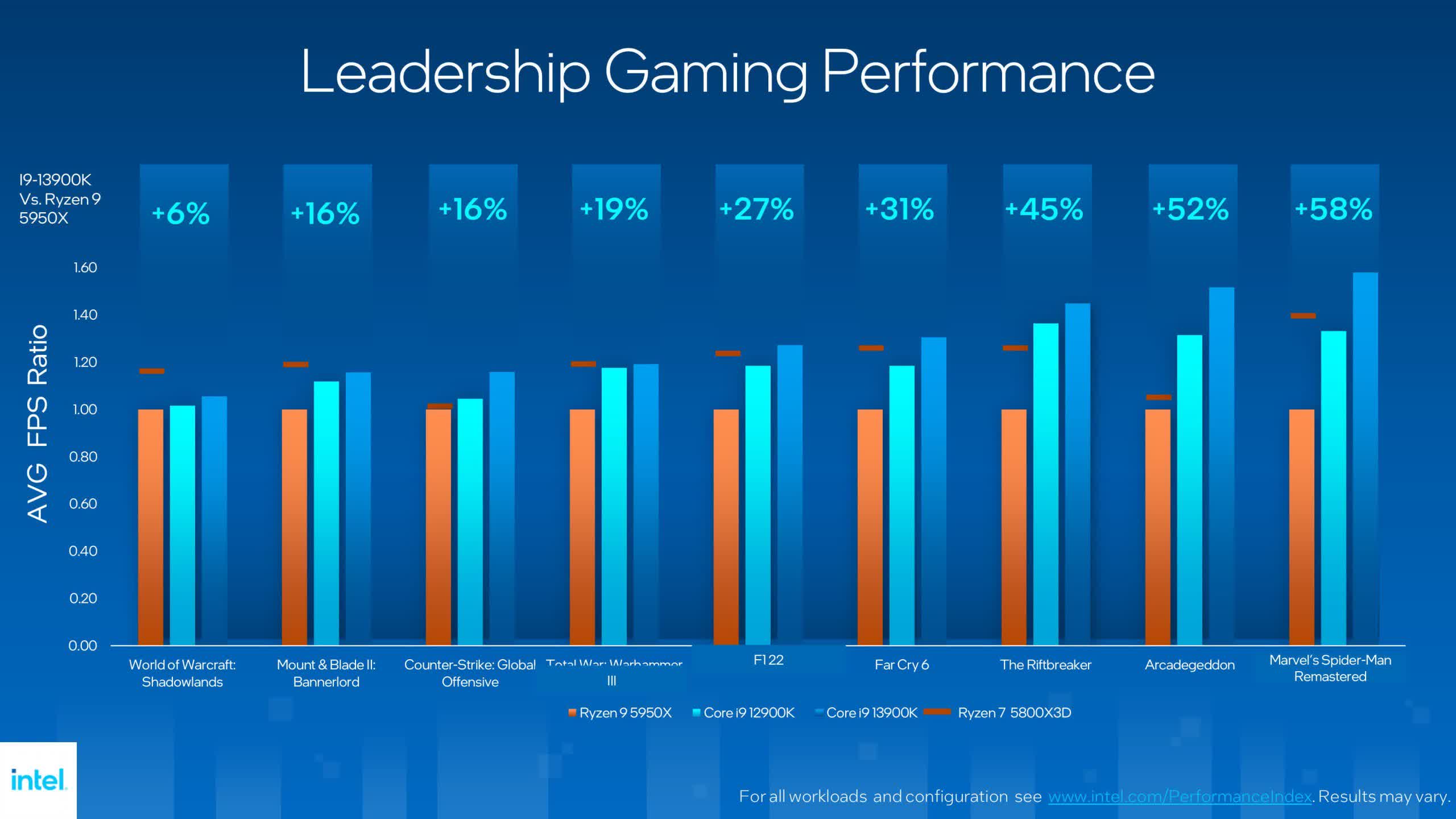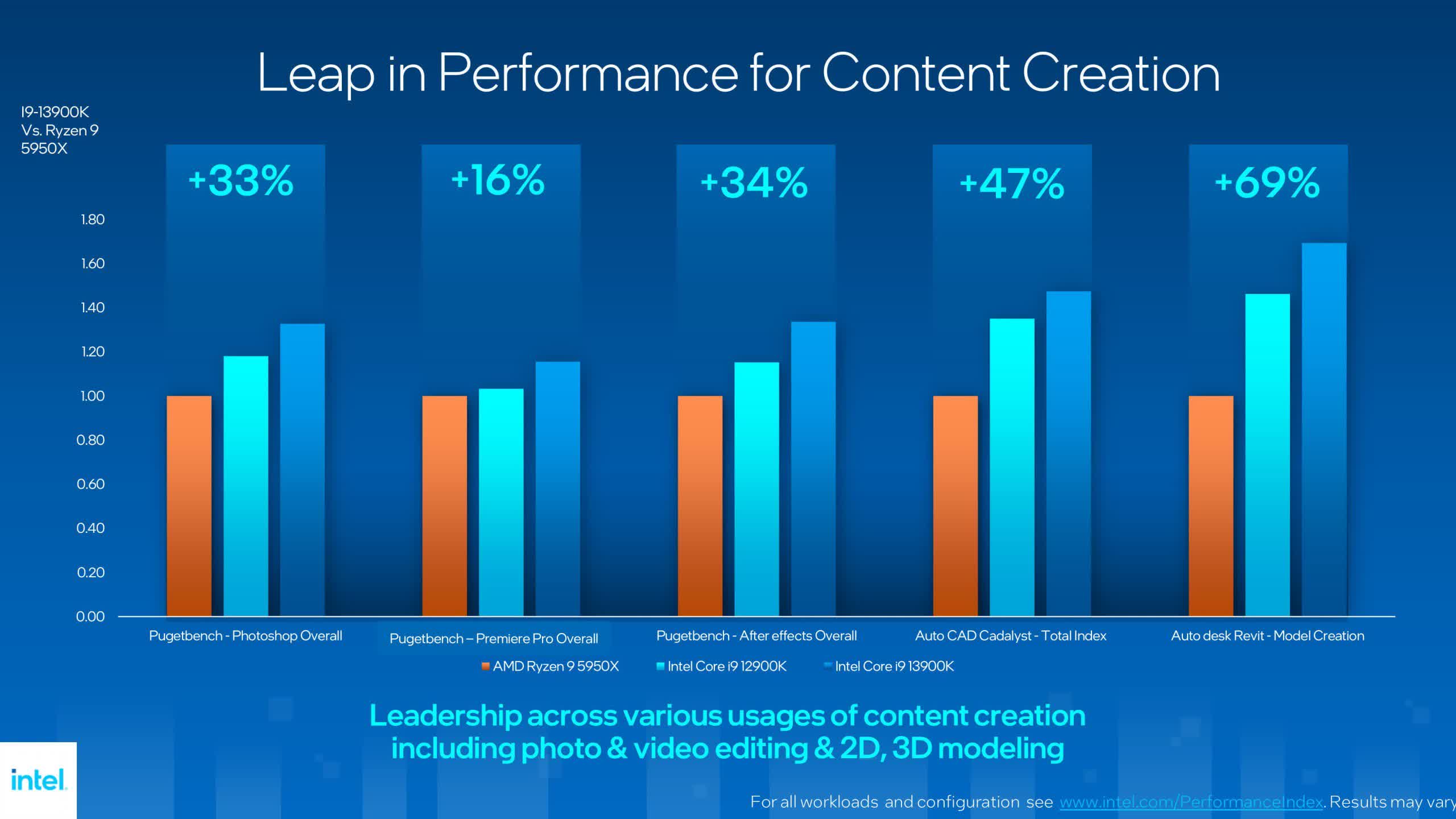Something to look forward to: After months of leaks, Intel has finally announced its first "Raptor Lake" 13th-gen Core desktop processors alongside the new Z790 chipset. The new CPUs will compete against AMD's Ryzen 7000 series. Stay tuned for our reviews coming next month.
On Tuesday, Intel launched its Raptor Lake processors with double the amount of E-cores compared to their Alder Lake (AL) counterparts, and each cluster of four E-cores now has access to 4MB of L2 cache (vs. 2MB on AL). The P-core count remains the same across the lineup, although they use the new Raptor Cove architecture. Intel didn't go into much detail on the new arch but mentioned it comes with improved speed paths and 2MB L2 cache per core, compared to 1.25MB in the previous gen.
Raptor Lake CPUs have a larger shared L3 cache pool, up to 36MB, while the ring bus can now boost up to 900 MHz higher. The IMC also got an update, as all models include DDR5-5600 (up from DDR5-4800 on AL) and DDR4-3200 memory support.
Intel initially launched three models, each available with and without built-in graphics. The Core i9-13900K(F) features 8 P-cores and 16 E-cores for 24 CPU cores and 32 threads (E-cores miss out on hyperthreading). Clock speeds are equally impressive, with the E-cores boosting up to 4.3 GHz and the P-cores reaching 5.8 GHz if you have sufficient cooling. It has a maximum turbo power rating of 253W compared to 240W on the i9-12900K.
The Core i7-13700K(F) packs 8 P-cores and 8 E-cores for 16 cores and 24 threads. Frequencies range from 5.4 GHz on the P-cores and 4.2 GHz on the E-cores. Power limits are the same as on the Core i9.
Lastly, the Core i5-13600K(F) comes with 14 cores (6P + 8E) and 20 threads. It can boost up to 5.1 GHz on its performance cores and 3.9 GHz on the efficient cores while only requiring 181W for max turbo.
Pricing is surprisingly reasonable, with the Core i9 and Core i7 models costing the same as their Alder Lake counterparts, while the Core i5 variants got a $30 price hike.
Intel has provided several graphs highlighting that the new 13th-gen processors are faster in gaming and content creation than Zen 3 and Alder Lake chips. However, the real question is how these CPUs will stack up against AMD's Ryzen 7000 lineup.
Team Blue also unveiled its new Z790 chipset yesterday. Existing 600-series motherboards will support 13th-gen CPUs, but the new Z790 motherboards come with eight additional PCIe 4.0 lanes and one extra 20 Gbps USB connector.
Intel's 13th-gen unlocked desktop processors will start shipping on October 20, the same day Z790 motherboards go on sale. The company has also teased a pre-binned SKU boosting up to 6 GHz for early next year, likely a successor to the Core i9-12900KS.
